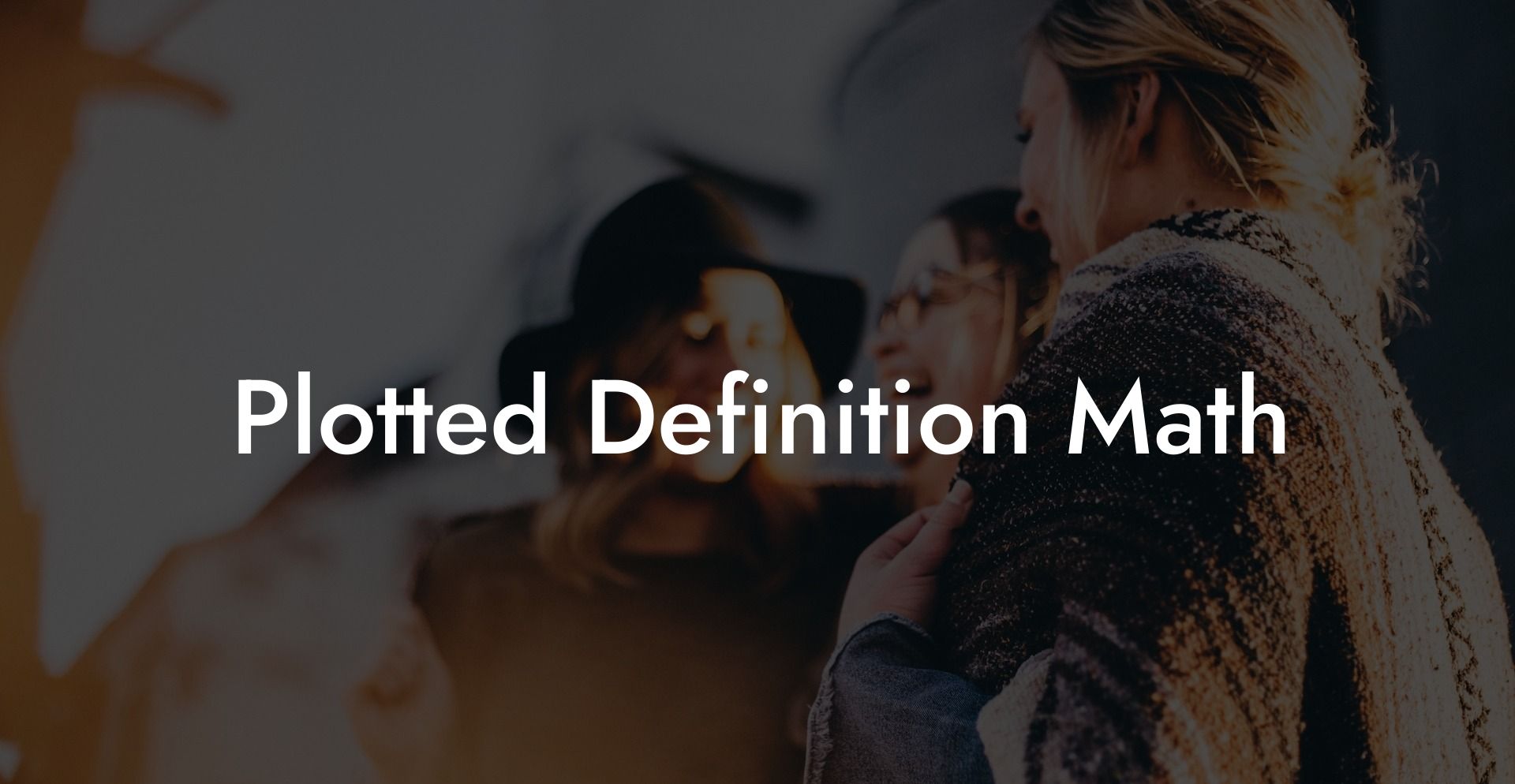Mathematics is a fascinating and complex world full of intricate patterns, relationships, and calculations. One of the key aspects that defines this discipline is the concept of a plotted definition, which helps create visual representations of the mathematical processes occurring on a graph. In this article, we will delve deep into the world of plotted definition math, uncovering its intricacies while shedding light on how they are useful in various real-life scenarios. Join us in unraveling the mystery behind this essential math concept.
Plotted Definition Math Table of Contents
What is Plotted Definition Math?
Plotted definition math involves creating a visual representation of a mathematical relationship or function using a graph. This graph typically consists of two perpendicular axes (x and y) that intersect at a point called the origin (0,0) and a series of points representing the ordered pairs (x,y) that define the function or relationship.
Why is it Important?
Understanding graphing and plotted definitions is crucial for various reasons:
- Visualization: Plotting points on a graph offers a clear, visual representation of a function or relationship. This can help identify trends, patterns, and solutions that might not be immediately apparent when simply looking at the underlying equations.
- Simplification: Graphing complex mathematical functions can help simplify them by breaking them down into smaller sections or patterns, making it easier to understand and solve them.
- Interpretation: Graphs can aid in the interpretation of a mathematical relationship, making it easier to understand the connections between variables, determine the function's behavior or identify its limitations.
- Application: Plotted definitions are vital in various disciplines and professions, such as physics, engineering, and economics, where they are used to interpret and analyze data, make predictions and support decision-making processes.
Types of Plots
There are numerous types of plots in mathematics, each serving a specific purpose and providing unique insights into the function or relationship being studied. Some common plot types include:
- Scatter Plots: These are used to represent the relationship between two variables by plotting a series of individual data points on a Cartesian plane.
- Line Plots: This type of plot connects the data points with a line, representing the continuous function or relationship between the variables.
- Bar Plots: Also known as bar graphs, these are used to plot categorical or discrete data using bars to represent the frequency or amount of each category.
- Pie Plots: This type of plot is used to represent parts of a whole, usually in the form of percentages, using a circular chart divided into sections (known as slices) to depict each part's ratio.
- Area Plots: These plots are used to represent cumulative quantities over time, using filled-in areas beneath the curve or line to indicate the accumulated sum. They are commonly used for displaying signals, measurements, or other time-series data.
Plotted Definition Math Example:
Imagine a group of students in a class who have taken a test with a maximum score of 100. The teacher wants to analyze the overall performance of the class and determine how well they've done based on their individual scores. Using a plotted definition of math, the teacher can create a scatter plot, with individual scores on the x-axis and the number of students on the y-axis, to visually observe the class's overall performance. Thus, the teacher can deduce trends and patterns like which score range most students fall under or any outliers or exceptional performances that might warrant further investigation.
The world of plotted definition math is a critical tool for understanding mathematical relationships, analyzing data, and making real-world decisions. By mastering the techniques of creating and interpreting various types of plots, we're able to see the beauty and complexity of mathematics come alive before our eyes. If you found this article insightful, please feel free to share it with others who may also be intrigued by the captivating essence of plotted definition math. Also, make sure to explore other informative guides available on The Monogamy Experiment to navigate the enticing realm of math and beyond.













